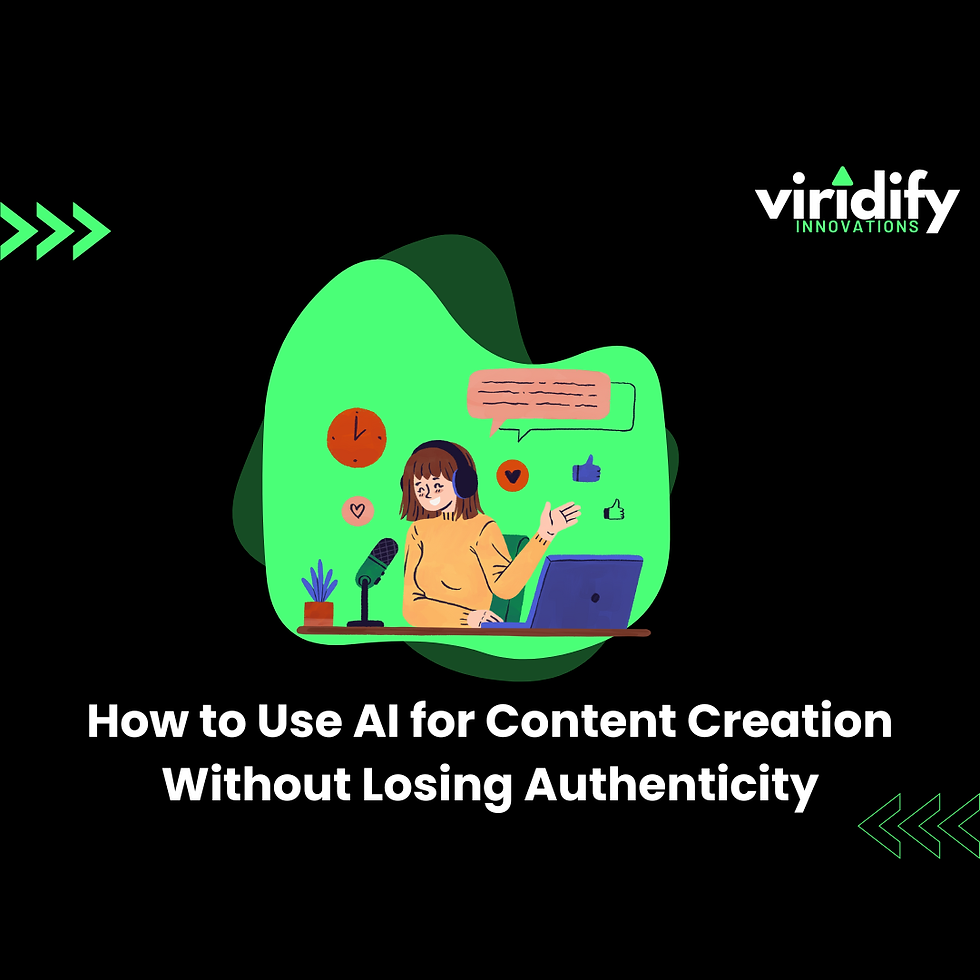Boost Rankings with Semantic SEO
- viridify innovations
- Oct 27
- 3 min read
Search engines have changed dramatically. Gone are the days when stuffing keywords was enough to get a website ranked. Today, Google uses advanced algorithms to understand meaning, relationships, and user needs. That’s where Semantic SEO comes in.
Semantic SEO is all about optimizing your content so that search engines don’t just see words, but actually understand intent, context, and entities behind them. If you want higher visibility and long-term rankings, this approach is no longer optional, it’s essential.
Understanding Search Intent in Semantic SEO

The first step in Semantic SEO is understanding intent, why a user is searching in the first place. Are they looking to buy, compare, or just learn?
Types of search intent include:
Informational intent – e.g., “What is semantic SEO?”
Navigational intent – e.g., “Viridify Innovations blog on SEO.”
Transactional intent – e.g., “Hire a digital marketing agency for SEO service.”
When your content matches the user’s true intent, search engines are more likely to rank you higher. For example, if someone searches “best PPC agency near me,” a blog explaining pay per click ads along with pricing insights will satisfy their intent better than a generic article.
Read our blog on - Semantic SEO in 2025: How Google’s AI Is Reshaping SEO
Contextual Relevance in Content
The second pillar of Semantic SEO is context. Google doesn’t just read words in isolation, it studies relationships between them.
For example:
A blog about “SEO service” should also mention related terms like “keyword research,” “on-page SEO,” and “search ranking improvements.”
A page about “digital marketing agency” should include discussions around branding, paid campaigns, and analytics to build a complete picture.
Adding context makes your content richer and more useful, which both readers and algorithms appreciate.
For practical steps on context building, you can check our blog on - On-Page SEO Checklist for AI Rankings in 2025
Why Entity Optimization Matters
The third element of Semantic SEO is entity optimization. An entity can be a person, place, brand, or concept that search engines recognize. By clearly defining entities in your content, you help Google connect your page to reliable knowledge graphs.
For example:
If you write about Viridify Innovations, Google recognizes it as an entity—an established digital marketing agency and associates it with marketing services, SEO, and PPC.
If you mention “pay per click ads,” schema markup can help search engines link it to advertising as a service entity.
Entity optimization improves authority and ensures your content is seen as part of a larger ecosystem of trusted knowledge.
Practical SEO Tips for Semantic Optimization
To apply Semantic SEO effectively, keep these SEO tips in mind:
Answer Questions Clearly: Use FAQ sections to respond directly to common queries.
Use Structured Data: Add schema for FAQs, reviews, and services to help search engines connect entities.
Cover Topics Holistically: Don’t just write about a keyword, cover its related concepts, tools, and applications.
Leverage Internal Linking: Connect your blogs naturally so Google understands your site’s topical authority.
Example: In PPC-related content, link to Performance Max Campaigns for added depth.
Semantic SEO and Digital Trends
Semantic optimization aligns with larger digital trends in search. With AI-driven tools like Google’s BERT and MUM, search engines now analyze full meanings rather than isolated words.
For businesses, this means:
You can’t trick Google with keyword stuffing.
Content must focus on user experience, context, and clarity.
Rich media (videos, infographics) combined with text help strengthen semantic signals.
Just as search engines evolve, ad platforms are adapting too. Our blog on Performance Max Campaign: Are They Worth the Hype? explains how automation and AI are shaping the future of paid campaigns.
Final Thoughts
As search engines get smarter, Semantic SEO is becoming a must-have strategy. By aligning with intent, context, and entity optimization, your content doesn’t just rank, it stays relevant in the long term.
And if you’re ready to take your SEO further, working with an expert digital marketing agency ensures you get the right mix of Semantic SEO, SEO service, and paid campaigns to build authority and trust online.
FAQs on Semantic SEO
Q1. What is Semantic SEO in simple terms?
Ans: Semantic SEO is optimizing content so search engines understand meaning, not just keywords.
Q2. Why is search intent important in Semantic SEO?
Ans: Because aligning with intent ensures your content answers what users actually want, improving rankings.
Q3. How does context improve SEO performance?
Ans: By covering related terms and topics, your content appears more complete and trustworthy.
Q4. What is entity optimization?
Ans: It’s the process of defining and linking recognized entities (brands, services, people) so search engines can connect them to knowledge graphs.
Q5. Can Semantic SEO improve PPC campaigns too?
Ans: Yes, aligning PPC ad copy with intent and entities makes campaigns more targeted and effective.



Comments